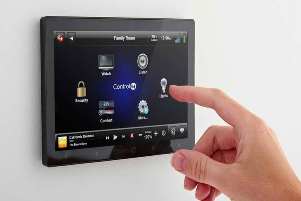Paradigms often come in cycles. Ideas that were popular at one point fade before rising again later. Modern computing is currently seeing resurgence in an older paradigm under a new name. Older computer users may be familiar with thin clients of the past, and this paradigm is rising again under the name of virtual desktops. Modern virtual desktops do, however, differ in some significant ways from thin clients of the past, and computer users will likely be able to take advantage of these features both at home and at the office.
Virtual Desktops
On a virtual desktop, information is stored remotely. One’s files are stored on a remote server, which allows users to access them from a number of devices. In addition, programs are also stored remotely. There are several techniques for sending data across a local network or the Internet, but they all result in the same outcome: streaming applications. By centralizing both data and applications, the virtual desktop paradigm holds tremendous promise for computer users.
No Installation Headaches
Most computers come with an operating system installed, but those who have switched to different operating systems or upgraded their existing operate systems are aware of how challenging it can be. In addition, most users have experienced difficulties installing programs. By serving these programs remotely, users can avoid these problems entirely.
Access from Anywhere
Due to the popularity of smart phones, users are interested in ways of connecting to their desktops from remote locations. Most virtual desktop solutions support multiple platforms, so users will be able to access their information while away. This freedom enables users to avoiding worrying about having the right hardware with them as they travel, and users may be able to use smart phones or tablets instead of hauling around laptops.
Telecommuting
The virtual office paradigm has been predicted for decades, but few businesses allow their employees to work from home. With virtual desktops, however, the virtual office may become a reality for many. Virtual desktops allow staff to log in to their work desktops while at a remote location, and setting up remote work locations will be as easy as entering an IP address, user name and password. Traveling workers will be able to access their office desktops as well.
Better Security
Computer security has improved in recent years, but malware still presents a significant hassle and threat. By storing information remotely, computer users will no longer have to worry about local compromises affecting performance or data security. As long as the remote servers are kept secure, users’ data will be safe.
Reliability
Computers frequently break, and the cost of a broken computer can be high in terms of both money and lost productivity. By reducing the demands on workstations, virtual desktops reduces the likelihood of broken components. Hard drives, for example, are notoriously unreliable. Implementing a redundant solution is expensive for workstations and desktops, but almost all servers use robust data storage techniques that prevent data loss.
Longer-Lasting Hardware
Since the processing and data storage is done elsewhere, computer users will find that their computers need to be replaced far less frequently. Many virtual desktops require only a web browser, so software upgrades will not require new hardware. Computer upgrades in the future may only entail purchasing a better monitor or new keyboard.


